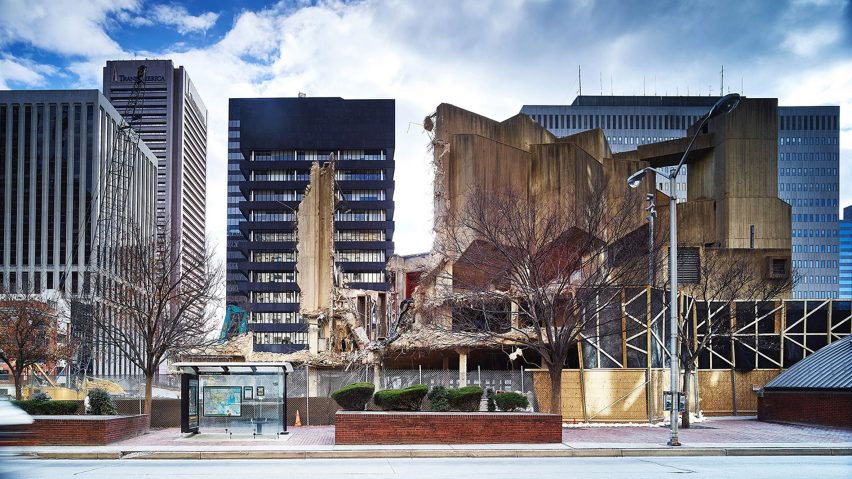
Destruction of brutalist buildings shown at Boston photography exhibition
The razing of notable brutalist buildings from the 1960s and 1970s, including work by architects Paul Rudolph and Alison and Peter Smithson, is the subject of a photography exhibition at a Boston art gallery.
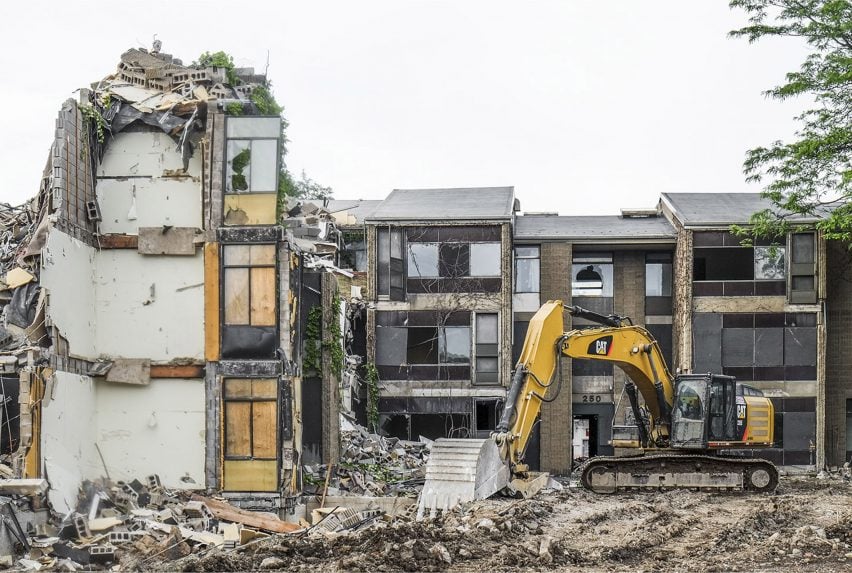
The Brutal Destruction show is on view at the Pinkcomma art gallery in the city's South End district. Running until 3 May 2018, the exhibition presents a collection of images by several photographers that capture the demolition of famed brutalist buildings in the US and the UK.

The colour photographs show shredded walls, exposed wires, and gaping holes, as bulldozers and wrecking balls work to dismantle the concrete structures.
"These haunting images of buildings in the process of destruction show an architecture once praised, yet now at its most vulnerable a half-century or so after its completion, and vilified to the point of demolition," said curator Chris Grimley, a principal at Over, Under – a Boston-based studio founded in 2006.
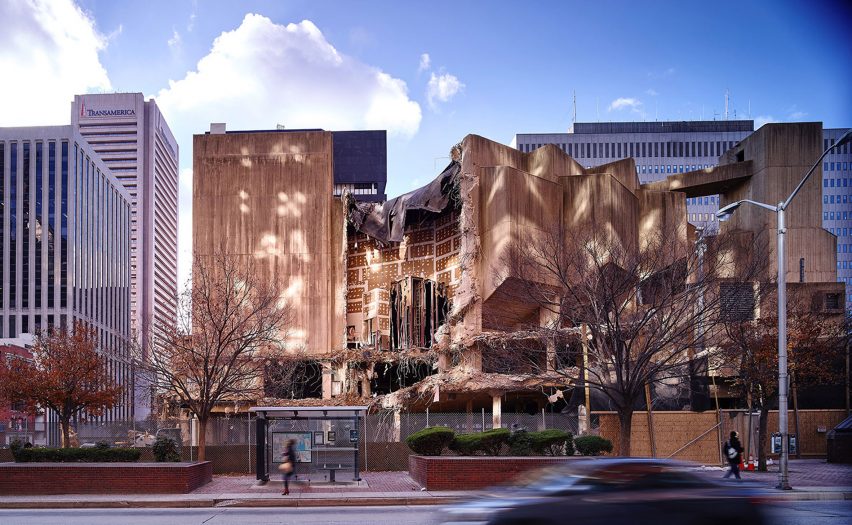
"Suspended between life and death, these buildings remind us of the power that architecture can possess upon its inception, but also of the forces that conspire against it once it is judged to have become old, out-of-shape, obsolete or ugly."
The photographers whose work is presented are Matthew Carbone, Harlan Erskine, Jason Hood, Rey Lopez, David Schalliol and David Torke – some of whom Grimley already knew, and others he tracked down after seeing their work online. The Guardian's architecture critic, Oliver Wainwright, also contributed.
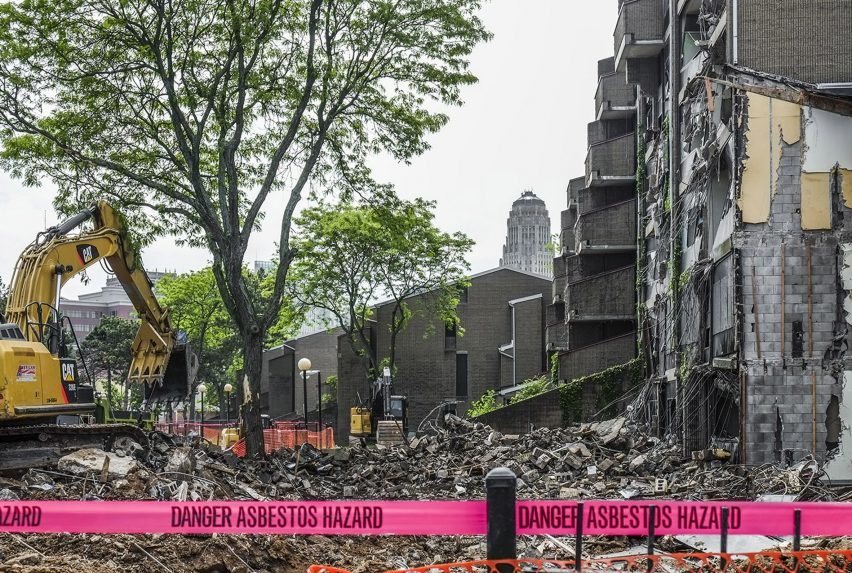
Among the projects showcased include the 1974 Shoreline Apartments in Buffalo, New York, by the late American architect Paul Rudolph. Portions of the affordable housing complex were torn down starting in 2015. A lone tenant who refuses to move has kept the owner from bulldozing the remainder of the complex, and his case is now making its way through the court system.
Others represented in the exhibition include Rudolph's Orange County Government Center in Goshen, New York, is also represented in the exhibition. Dating to 1971, the building was partly dismantled before preservationists managed to save the remaining parts.
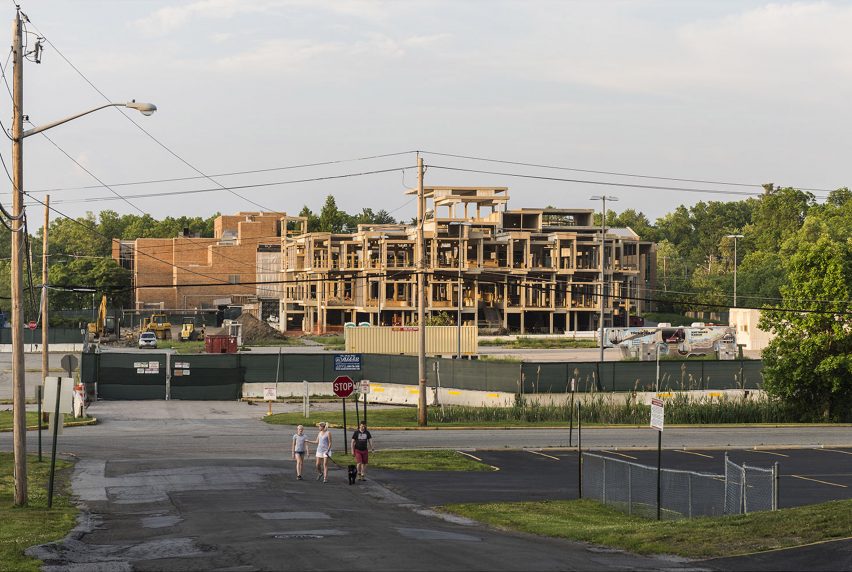
Demolition of Robin Hood Gardens, a seminal housing complex by the late English architects Alison and Peter Smithson, which Dezeen caught on film, began in 2017 with the western block and is continuing this year. The architects' son, Simon Smithson, described the destruction as an "act of vandalism".
The Mechanic Theatre in Baltimore, Maryland, designed by architect John Johansen and completed in 1967, is also included. It was torn down in 2014 to make way for a new retail and residential building.
The photographer, Carbone, made multiple trips to the site to document the theatre's demise. "For a while, the destruction was slow going, as if the building was fighting back," he told Architect magazine in 2015.
Other structures featured in the exhibition include a library in the UK by architect John Madin, a church in Washington DC by Arlado Cossutta, and a hospital in Chicago by Bertrand Goldberg.
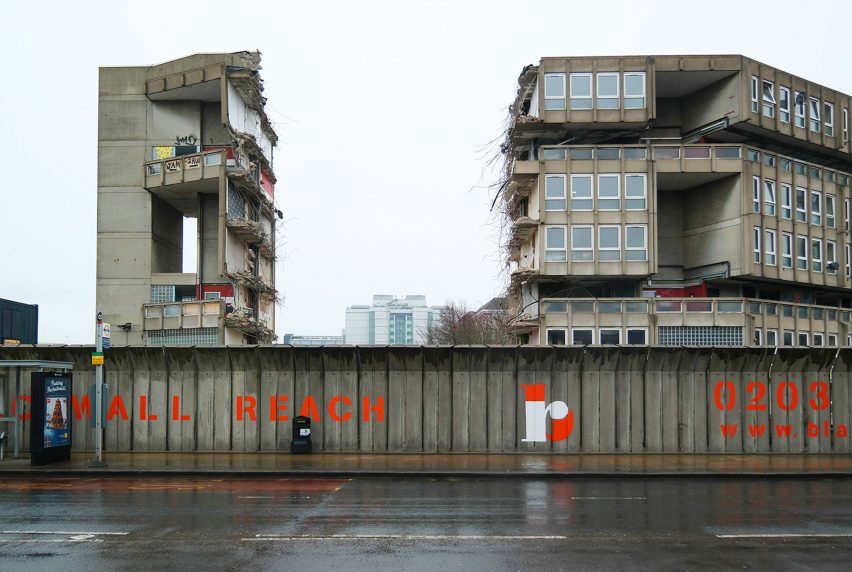
Grimely's aim with the show is to question the vilification of brutalism and the impulse to tear down brutalist buildings.
"If there is a lesson in seeing concrete masterworks disfigured and demolished, we do not believe it lies in exposing or punishing the hubris of the generation that created them," Grimley said.
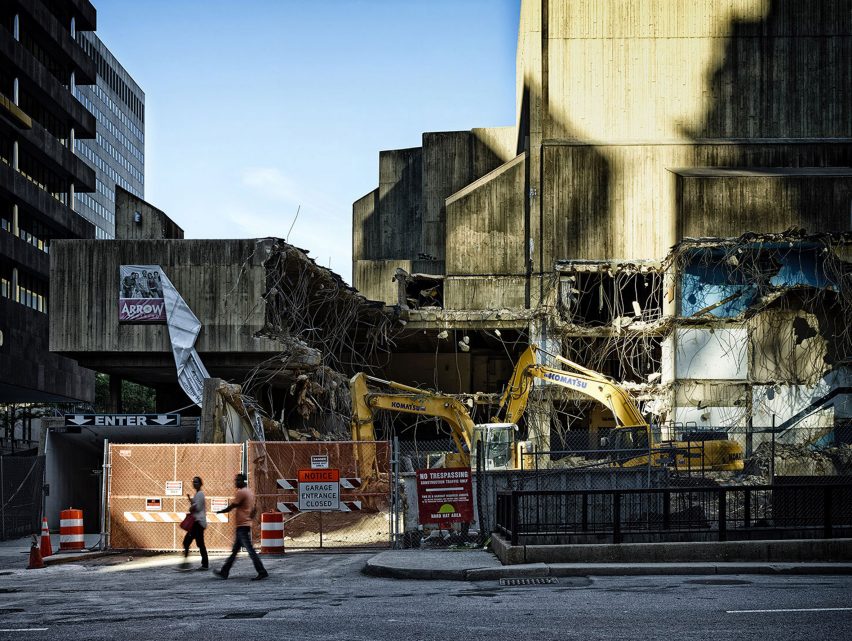
"Rather, the current wave of destruction says more about our own pessimism, the weakness of our potential building legacy, and our lack of patience in finding ways to supersede the cycle of ugliness and make these monstrosities our own."
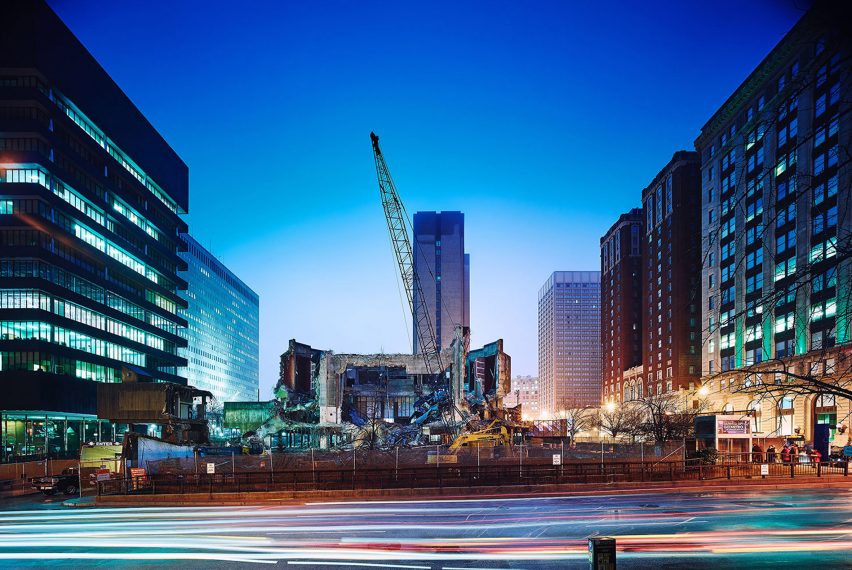
The Brutal Destruction exhibition is part of the ongoing Heroic Project, which aims to draw attention to concrete structures built in the 20th century. In 2015, the group published the book, Heroic: Concrete Architecture and New Boston, and last year, they released a map documenting Boston's brutalist architecture.
Project credits:
Pinkcomma gallery: Chris Grimley, Michael Kubo, Mark Pasnik
Curatorial assistant: Shannon McLean
Exhibit assistant: Anna Driscoll